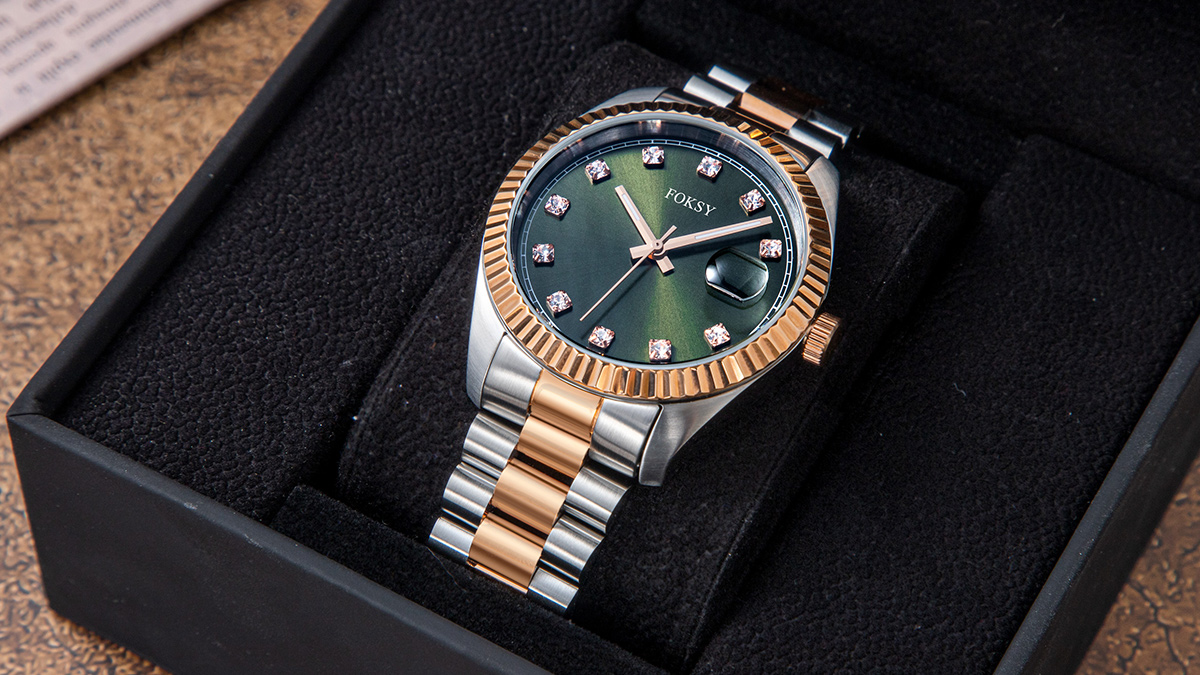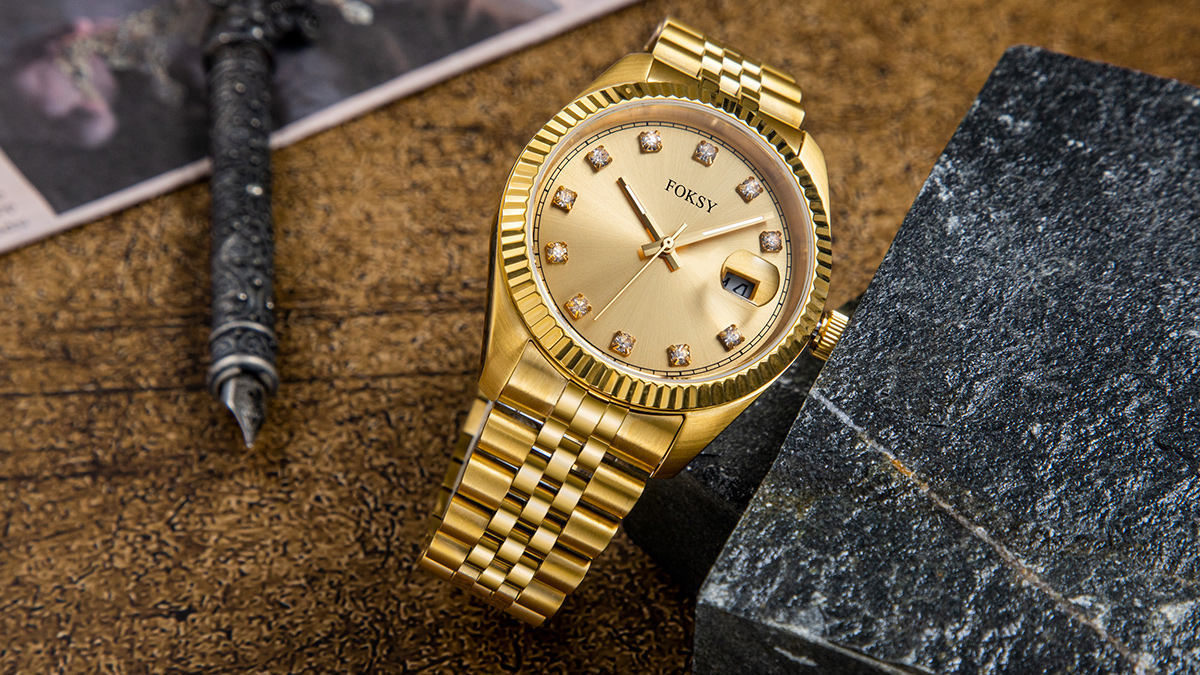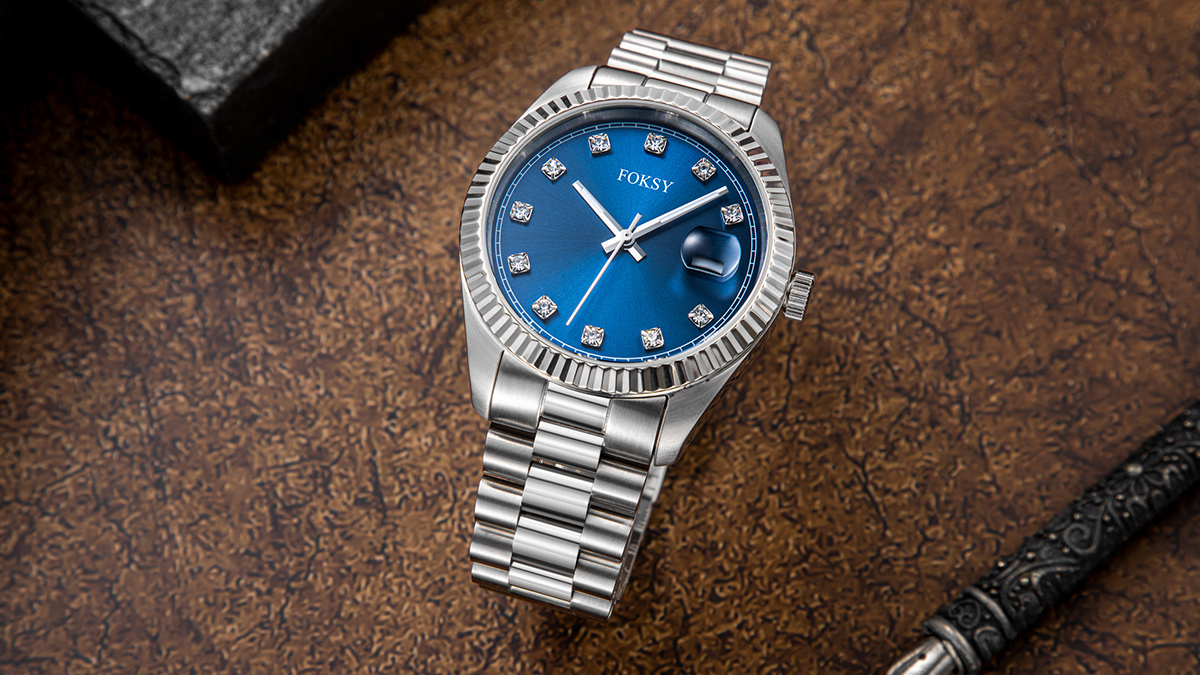 Foksy Watches
Foksy Watches  2025-06-19
2025-06-19
Application areas: bezel, lugs (joint between case and strap), hands or partial decorative parts.
Technology features: Through fine grinding (such as wool wheel + polishing paste), the metal surface can achieve a mirror-like bright effect, strong reflectivity, and appear high-end and luxurious watch.
Pros and cons: Beautiful but easy to show scratches, need regular maintenance.

Application areas: large areas such as the side of the watch case and the watch strap.
Technology features: Use sandpaper or wire brush to polish in a single direction to form a delicate straight line texture (brushed texture), restrained texture, and matte effect.
Pros and cons: wear-resistant and can hide small scratches, more practical for daily use.

Optional processes: Common coatings include DLC (diamond-like carbon), PVD (physical vapor deposition), etc., which are covered on the surface of the case or strap.
Function: Increase hardness (up to 2-4 times that of ordinary stainless steel), reduce scratches caused by daily friction, and change color (such as black, gun gray).
Note: The coating may peel off due to strong impact, and repair requires professional treatment.

Common logic of craft matching
Beautiful + practical: For example, polishing the bezel highlights the gloss, and brushing the side enhances durability.
Coating selection: Sports watches/tool watches prefer scratch-resistant coatings, and formal watches may retain the pure metal texture.
These processes directly affect the visual style and service life of the watch, and users can choose according to their preferences and wearing scenarios.
Focus On Customize Watches
For Micro Brands
Room C201, Huafeng Wisdom Innovate Park, Gushu 2nd Road, Bao'an Dist, Shenzhen, China.
